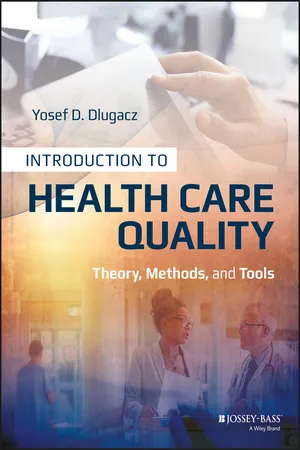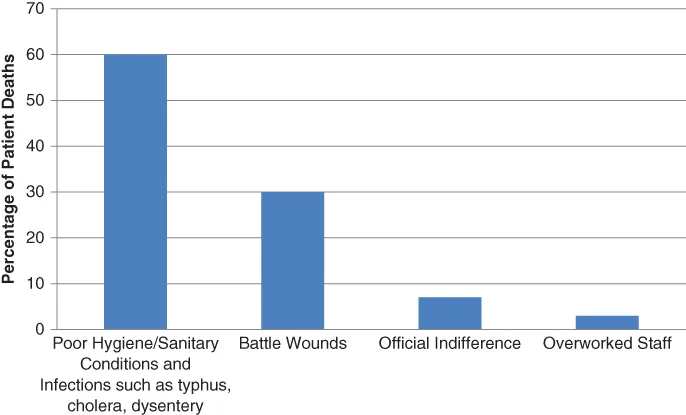
- English
- ePUB (mobile friendly)
- Available on iOS & Android
About this book
Introduction to Health Care Quality explores the issues of quality management in today's health care environment, and provides clear guidance on new and perennial challenges in the field. The idea of 'quality' is examined in the context of a variety of health care situations, with practical emphasis on assessment, monitoring, analysis, and improvement. Students will learn how to utilize statistical tools, patient data, and more to understand new models of reimbursement, including pay for performance and value-based purchasing. They will also learn how to learn how to incorporate technology into everyday practice. Each chapter centers on an essential concept, but builds upon previous chapters to reinforce the material and equip students with a deeper understanding of the modern health care industry. Real-world situations are highlighted to show the intersection of theory and application, while cutting-edge methodologies and models prepare students for today's data-driven health care environment.
Health care quality is defined and assessed according to setting, with factors such as standards, laws, regulations, accreditation, and consumerism impacting measurement and analysis in tremendous ways. This book provides an overview of this complex field, with insightful discussion and expert practical guidance.
Health care today is worlds away from any other point in history. As the field grows ever more complex, quality management becomes increasingly critical for ensuring optimal patient care. Introduction to Health Care Quality helps students and professionals make sense of the issues, and provide top-notch service in today's rapidly changing health care environment.
Frequently asked questions
- Essential is ideal for learners and professionals who enjoy exploring a wide range of subjects. Access the Essential Library with 800,000+ trusted titles and best-sellers across business, personal growth, and the humanities. Includes unlimited reading time and Standard Read Aloud voice.
- Complete: Perfect for advanced learners and researchers needing full, unrestricted access. Unlock 1.4M+ books across hundreds of subjects, including academic and specialized titles. The Complete Plan also includes advanced features like Premium Read Aloud and Research Assistant.
Please note we cannot support devices running on iOS 13 and Android 7 or earlier. Learn more about using the app.
Information
PART ONE
QUALITY MANAGEMENT FUNDAMENTALS
CHAPTER ONE
FOUNDATIONS OF HEALTH CARE QUALITY
Chapter Outline
- Defining Quality
- Contributions of Quality Theorists—Nothing New under the Sun
- Quality Management Methodologies
- Organizations Making an Impact on Quality and Safety Standards
- Centers for Medicare and Medicaid Services
- Institute for Healthcare Improvement
- Agency for Health Research and Quality
- National Quality Forum
- The Leapfrog Group
- Data: The Foundation of Quality Management
- Summary
- Key Terms
- Quality Concepts in Action
- References
- Suggestions for Further Reading
- Useful Websites
Key Concepts
- Understand issues involved in defining the concept of quality in health care.
- Introduce important quality theorists.
- Describe quality methodologies.
- Explain the role of agencies and groups that have an impact on health care quality.
- Review the role of data as the foundation of quality management.
Defining Quality
Contributions of Quality Theorists—Nothing New under the Sun
Florence Nightingale


Ernest A. Codman
Table of contents
- Cover
- Title Page
- Copyright
- Table of Contents
- Dedication
- List of Figures and Tables Preface
- Preface
- Acknowledgments
- About the Author
- Introduction
- Part I: Quality Management Fundamentals
- Part II: Applying Quality Tools and Techniques
- Index
- End User License Agreement